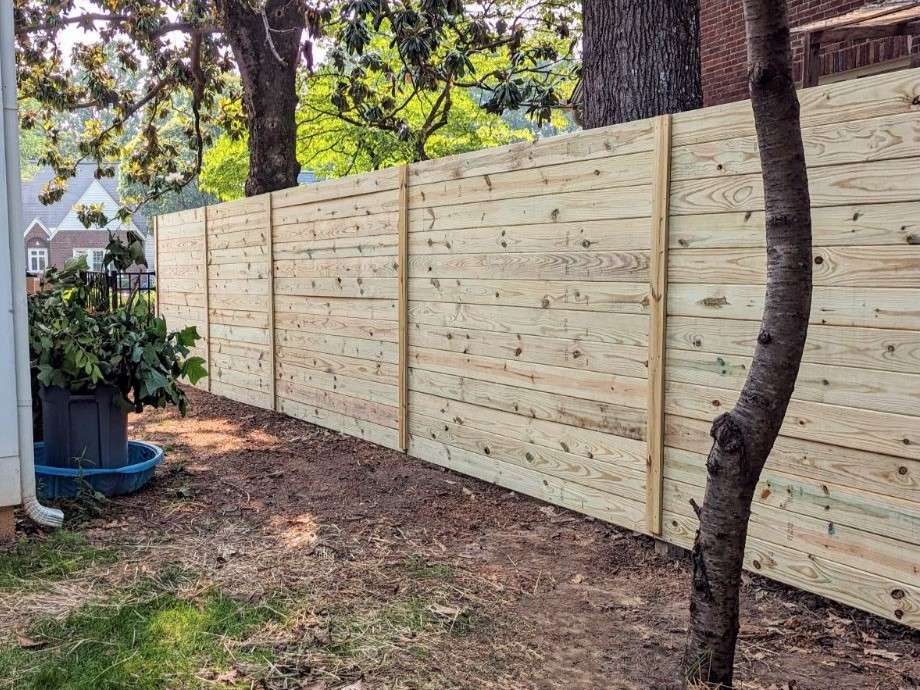All Categories
Featured
Setting up a fence around your building can considerably boost its privacy, curb, and safety allure. Prior to the installation process starts, it's vital to correctly prepare your building to ensure that whatever goes efficiently. Preparing your residential property can aid stay clear of unanticipated delays, expenses, or issues throughout the setup, ensuring a convenient and professional outcome. Right here's a guide on exactly how to prepare your residential or commercial property for fencing installment.
Additionally, look for any type of below ground obstacles like lawn sprinkler, irrigation pipes, or energy lines. You can typically contact your local energy company to mark the places of these underground attributes to avoid unexpected damage during installment. It's always best to make certain the ground is without obstructions before the service provider begins excavating.
![]()
![]()
Verdict. Preparing your home for fence installation is an essential action in the process that can save you anxiety, time, and money. By understanding local regulations, noting residential property lines, clearing the setup location, and connecting with your next-door neighbors, you can make sure a smooth and effective installation. Taking the time to prepare appropriately will not only make the installment procedure much easier yet likewise result in a stunning, long lasting fencing that boosts your home for years to come.
- Examine Local Regulations and Permits. Prior to starting the physical preparations, it's critical to comprehend the neighborhood regulations bordering fencing installation. You might need to get a permit before installation or validate with your Homeowners Association (HOA) if you live in a neighborhood with details standards.
- Mark Your Building Lines. Understanding specifically where your home lines are is necessary to guarantee the fence is set up properly. You do not want to mistakenly build part of your fence on your neighbor's land, as this can lead to conflicts.
- Clear the Installment Location. Next, you require to prepare the area where the fence will be installed. These items can interfere with the fence setup process and might need added labor or tools to eliminate, which might boost expenses and time.
Additionally, look for any type of below ground obstacles like lawn sprinkler, irrigation pipes, or energy lines. You can typically contact your local energy company to mark the places of these underground attributes to avoid unexpected damage during installment. It's always best to make certain the ground is without obstructions before the service provider begins excavating.

- Think About Access for Setup Equipment. During the fencing installment process, hefty devices such as trucks, diggers, or articles may need to access your residential or commercial property. Make certain that there is a clear and obtainable course to your building for these vehicles to stay clear of any hold-ups. It's crucial to review this with your specialist ahead of time so they can prepare accordingly if you have a slim driveway or limited access. Cleaning the pathway additionally aids to stay clear of damages to your grass, landscaping, or any type of frameworks near the installation area.
- Communicate with Next-door neighbors. If you're installing a fence on or near the home line, it's courteous to notify your neighbors about the task beforehand. If you're working with a service provider, ask them to be mindful of your neighbor's property during setup.
- Pick Your Fencing Material and Style. Prior to installment begins, choose on the type of fencing product and design you want. Furthermore, make certain to connect your selection with the professional so they can prepare appropriately, guaranteeing they have all the necessary materials on hand for a smooth installation.

- Plan for the Last Touches. If you've chosen for a decorative or custom style, the setup group might need added time to guarantee whatever aligns as prepared. It's an excellent idea to evaluate the fence once the setup is total to ensure every little thing fulfills your assumptions.
Verdict. Preparing your home for fence installation is an essential action in the process that can save you anxiety, time, and money. By understanding local regulations, noting residential property lines, clearing the setup location, and connecting with your next-door neighbors, you can make sure a smooth and effective installation. Taking the time to prepare appropriately will not only make the installment procedure much easier yet likewise result in a stunning, long lasting fencing that boosts your home for years to come.
Latest Posts
The Perfect Floor Covering for Every Home
Published Apr 20, 25
1 min read
Rapid Auto Service - Schedule with Montclare Auto Repair Without Delay
Published Apr 20, 25
2 min read
NAPA AutoCare Certified: Rely on Montclare Auto Repair for Reliable Auto Care
Published Apr 20, 25
2 min read
More
Latest Posts
The Perfect Floor Covering for Every Home
Published Apr 20, 25
1 min read
Rapid Auto Service - Schedule with Montclare Auto Repair Without Delay
Published Apr 20, 25
2 min read
NAPA AutoCare Certified: Rely on Montclare Auto Repair for Reliable Auto Care
Published Apr 20, 25
2 min read